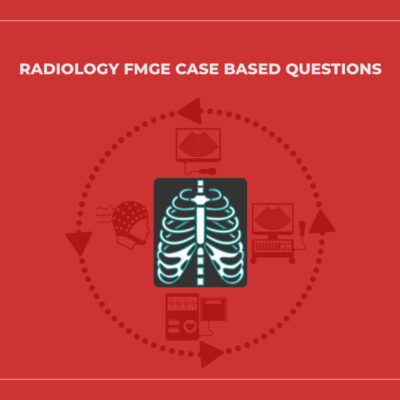Anatomy FMGE Case Based Questions
A 2-year-old male patient develops progressive generalized weakness and muscle atrophy. The impairment first began with the muscles of the hips, and then progressed to the pelvic area, thigh, and shoulder muscles. The patient is diagnosed with Duchenne’s muscular dystrophy, a congenital disorder where the protein dystrophin is deficient. Which of the following describes the role of dystrophin in muscle tissue?
Correct!
Wrong!
An 8-year-old boy is referred to a neurologist by his family physician because he has developed progressive slow and clumsy walking. On examination, the patient has difficulty with standing and running. While standing, he adopts a wide-based gait with constant shifting of position to maintain his balance. Sitting or standing, he also displays a constant tremor of the head and trunk. When asked to walk, his feet strike the ground in an uneven and irregular rhythm; if he attempts to correct his imbalance, he displays wild and abrupt movements. A magnetic resonance image (MRI) reveals demyelination in the dorsal columns, corticospinal and spinocerebellar tracts. The child is diagnosed with Friedreich’s ataxia, an autosomal recessive neurological disorder resulting from mutation of a gene locus on chromosome 9. Second-order neurons of the dorsal (posterior) spinocerebellar tracts are located in which of the following?
Correct!
Wrong!
The third week of development is characterized by the appearance of the branchial apparatus, the embryonic primordium from which head and neck structures will be derived. The apparatus consists of five branchial arches, numbered 1, 2, 3, 4 and 6. Second arch anomalies represent 95% of all branchial anomalies and are classified into four types with types I–III being the most common. The anomalies manifest as cysts or fistulae in the lateral neck, located anterior and deep to the sternocleidomastoid muscle. Which of the following structures develop from the second branchial arch?
Correct!
Wrong!
A10-year boy is examined because his parents noticed that “his eyes never seem to look in the right direction.” On examination, the left eye of the child is unable to move laterally (abduction) and when asked to look toward the nose (adduction), the eyeball retracts into the socket and the eye opening narrows. Sometimes, the eye also moves superiorly. The child is diagnosed with Duane syndrome, a congenital ocular motility disorder characterized by limited abduction of the affected eye. This is due to absence of the abducens (fifth cranial) nerve with aberrant innervation by the oculomotor (third cranial) nerve. Which of the following muscles is normally innervated by the abducens nerve?
Correct!
Wrong!
Retinitis pigmentosa is a hereditary disorder, which affects the photoreceptors (the rods and the cones) in the retina. These photoreceptors are located in which of the numbered layers in Fig. 1-1?

Correct!
Wrong!
The structure indicated by arrow 1 in Fig. 1-2 is which of the following vessels?

Correct!
Wrong!
A 4-month-old male infant is brought to the clinic because of excessive noisy respiration. On examination, the infant is within the normal range of growth, appears healthy, and does not show respiratory distress. Phonation is normal, along with head and neck examination findings. However, the child displays stridor (highpitched breathing sound) on inspiration, accentuated in the supine position. The parents report that the same stridor is heard during feeding or when the child is agitated. The attending physician places the child in the prone position and the stridor is relieved. To confirm, she holds the child in a neck extended position, which also relieves the stridor. An endoscopic laryngeal examination reveals bulky arytenoids cartilages and the diagnosis of laryngomalacia is established. During development, the arytenoids cartilages arise from which of the following?
Correct!
Wrong!
An 8-year-old male patient is brought to a rural hospital with a history of recurrent infection. The patient has a characteristic facies with a high, broad nasal bridge, long face, narrow palpebral fissures, and an abnormally small mandible. The patient also has a cleft palate. The patient is diagnosed with DiGeorge syndrome, an inherited immunodeficiency disease due to a chromosome 22q11.2 deletion. In this syndrome, the production of which of the following cells is affected in the thymus?
Correct!
Wrong!
A newborn infant suffers from cyanotic heart disease caused by transposition of the great arteries (TGA). In this situation, the aorta arises from which of the following structures?
Correct!
Wrong!
About 75% of the blood supply of the spinal cord is derived from the anterior spinal artery. This artery arises from which of the following?
Correct!
Wrong!
Anatomy FMGE Case Based Questions


| How to Prepare Anatomy for FMGE? | How to Prepare Anatomy for FMGE? |
 |
 |
Related Tests:





